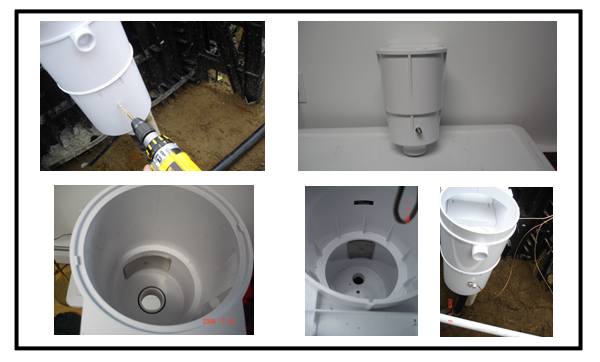17-122 Log #1894 NEC-P17 Final Action: Reject
(680.26(C) (New) )
Submitter: Frank C. Lambert, Georgia Tech/NEETRAC / Rep. National
Electric Energy Testing, Research, & Applications Center
Recommendation: Insert a new Section 680.26(C) as follows:
680.26(C) Pool Water. An intentional bond of a minimum conductive surface
area of 5806 mm 2 (9 in 2 ) shall be installed in contact with the pool water.
This bond shall be permitted to consist of parts that are required to be bonded
in 680.26(B).
Renumber the present sections sequentially from (C) to (D), (D) to (E), and
(E) to (F).
Substantiation: Bonding of metal parts in and around a swimming pool to an
equipotential bonding grid is extensively covered in 680.26. The intent of this
bonding is to equalize the voltages between the pool water and the deck
including any attached metal structures or parts. 680.26 has been effective in
mitigating stray voltage problems, especially in the case of fiberglass
swimming pools or pools with insulated liners.
680.26 describes various metal parts and equipment that require bonding with
an equipotential bonding grid. In describing these metal parts, it is assumed
that one or more of the parts are in contact with the pool water. This may not
always be the case. Some pools do not have any bonded metal parts in contact
with the water. In such a case, intentional bonding of the water is necessary to
equalize the water-to-deck voltages. Presently, 680.26 does not have a
provision for intentional bonding of the pool water.
Panel Meeting Action: Reject
Panel Statement:
The submitter has not provided adequate substantiation.
There are issues such as conductivity of water, changes with water temperature,
current flow, size of conductors, etc. that need to be addressed.
Number Eligible to Vote: 11
Ballot Results: Affirmative: 9 Negative: 2
Explanation of Negative:
HIRSCH, B.: The testing done by the National Electric Energy Testing,
Research and Applications Center (NEETRAC) clearly substantiates that the
potential for shock hazard is increased in pools where the pool water is not
bonded via metal parts in the pool. Results of this testing were reported to
Panel 17 at the proposal meeting in January of 2006. Based on this testing, EEI
supports the adoption of this proposal and as such is voting negative to the
panel?s action. At the proposal meeting, Panel 17 indicated they had additional
questions that needed to be answered before supporting this proposal. The
panel statement, however, did little to document those concerns. Just as the
submitter needs to provide compelling substantiation for a code change, the
code panel has the responsibility to provide a justifiable technical basis to
reject well supported proposals.
JHONSON, D.: I agree with the Submitter?s substantiation, and, in addition,
the substantiation of the NEETRAC testing results reported to Code-Making
Panel 17 at the ROP meeting in January of 2006. I have provided additional
relevant pool test results from a project supervised by the university of
Newcastle, Australia and sponsored by Energy Australia. This reports a
potential shock hazard when conditions exist effectively bridging the isolation
of the pool water provided by an insulated pool shell.
This issue should be revisited.
Note: Supporting Material is available for review at NFPA headquarters.



